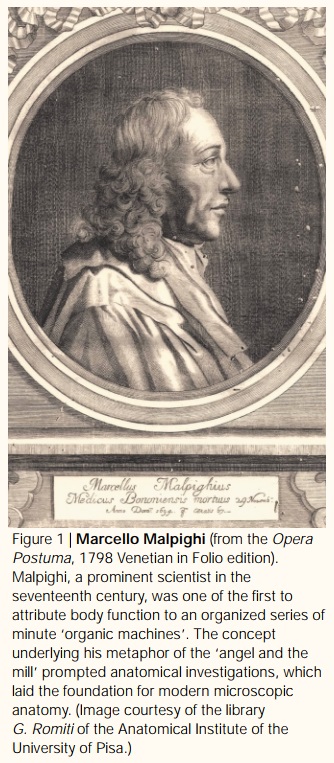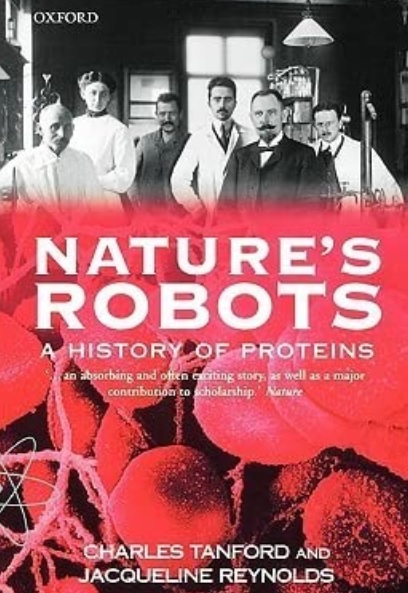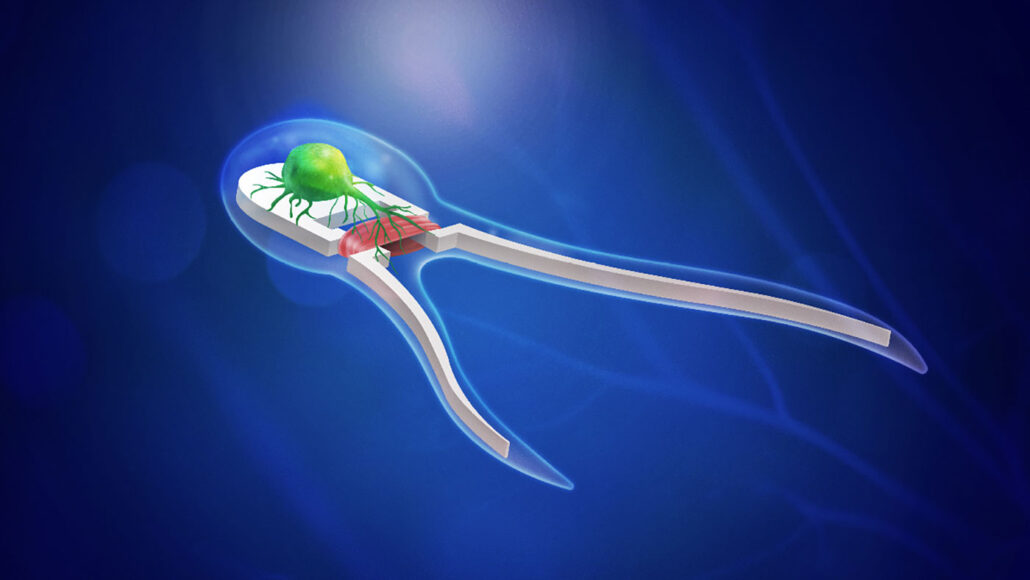https://reasonandscience.catsboard.com/t1289-molecular-machines-in-biology
Definitions
A machine is a piece of equipment with several moving parts that uses power to do a particular type of work
https://dictionary.cambridge.org/dictionary/english/machine
A machine is an assembly of interconnected components arranged to transmit or modify force in order to perform useful work. Proteins are made of several interconnected subunits, and perform a specific function, using ATP as an energy source.
K. Eric Drexler: Engines of Creation 2.0 2006
“Any system, usually of rigid bodies, formed and connected to alter, transmit, and direct applied forces in a predetermined manner to accomplish a specific objective, such as the performance of useful work.” Molecular machines fit this definition quite well.
1. Machines are always designed.
2. Proteins are machines.
3. Therefore, proteins were designed.
Michael Denton (1986): Evolution, A Theory in Crisis, , p234
Protein molecules are the ultimate stuff of life. If we think of the cell as being analogous to a factory, then the proteins can be thought of as analogous to the machines on the factory floor which carry out individually or in groups all the essential activities on which the life of the cell depends. Each protein is a sort of micro-miniaturized machine, so small that it must be magnified a million times before it is visible to the human eye. The structure and functioning of these fascinating workhorses of the cell was a complete mystery until the 1950s.
A. G. CAIRNS-SMITH Seven clues to the origin of life, page 66
Once you think you will need machines, then you will think that you need a lot. If. for example, the organism has to have some kind of printing machinery in it, so that it can replicate its genetic information, then it will need manufacturing machinery also to make this printing machinery. And then this manufacturing machinery, some sort of robot, must also be able to make other machines exactly like itself. The circle closes eventually, but not until after a long journey - too long to be a practicable piece of engineering even for us, and much too long for Nature before its engineer, natural selection, had come on the scene.
Membranes to Molecular Machines: Active Matter and the Remaking of Life Mathias Grote
Today's science tells us that our bodies are filled with molecular machinery that orchestrates all sorts of life processes. When we think, microscopic "channels" open and close in our brain cell membranes; when we run, tiny "motors" spin in our muscle cell membranes; and when we see, light operates "molecular switches" in our eyes and nerves. A molecular-mechanical vision of life has become commonplace in both the halls of philosophy and the offices of drug companies, where researchers are developing “proton pump inhibitors” or medicines similar to Prozac.
Physics and chemistry cannot reveal the practical principles of design or co-ordination which are the structure of the machine.
http://echo.iat.sfu.ca/library/polanyi_70_transcendence.pdf
Proteins perform vital functions of life, they digest food and fight infections and cancer. They are in fact nano-machines, each one of them designed to perform a specific task.
https://www.nanowerk.com/nanotechnology-news/newsid=46811.php
Molecular machines are the basis of life. The cell’s nanometer-scale machines are mostly protein molecules, although a few are made from RNA, and they are capable of surprisingly complex manipulations. They perform almost all the important active tasks in the cell: metabolism, reproduction, response to changes in the environment, and so forth. They are incredibly sophisticated, and they, not their manmade counterparts, represent the pinnacle of nanotechnology.
https://physicstoday.scitation.org/doi/10.1063/1.2216960
A machine is a device with interacting parts that operate in a coordinated fashion to produce a predetermined outcome. Machines can be described in terms of a list of parts and a blueprint indicating how those parts fit together, meaning that someone who has never seen a particular kind of machine should in principle be able to assemble any number of copies each virtually identical in appearance and performance—provided they can consult the machine’s design specifications. Second, as machines are designed to perform highly specific functions, their operation is tightly constrained, which is why it is possible to predict and control their behavior. Third, machines are highly efficient in what they do because they always follow the exact same sequence of steps in every cycle of their operation. And fourth, the operation of machines is not continuous; their functioning can be interrupted and their parts examined without thereby jeopardizing their structural integrity.
https://www.sciencedirect.com/science/article/abs/pii/S0022519319302292?via%3Dihub
The problem with engineering metaphors in molecular biology
https://philpapers.org/archive/NICOBT-2.pdf
“ ‘[m]achine’ is useful as a concept because the molecular assemblies [. . .] share important properties with their macroscopic counterparts, such as processivity, localized interactions, and the fact that they perform work toward making a defined product.”
“a molecular machine we are able to switch between two [or more] molecular states (shapes) in a controlled manner as part of a repetitious mechanical cycle.”
Alberts, has been one of the most influential advocates of the molecular machine metaphor in molecular biology during the last two decades. He gives the following explanation:
Why do we call the large protein assemblies that underlie cell function protein machines? Precisely because, like the machines invented by humans to deal efficiently with the macroscopic world, these protein assemblies contain highly coordinated moving parts. Within each protein assembly, intermolecular collisions are not only restricted to a small set of possibilities but the reaction C depends on reaction B, which in turn depends on reaction A – just as it would in a machine of our common experience.
Cells contain fully automated manufacturing production lines, transport carriers oriented by sophisticated GPS systems, incredibly efficient turbines, transistors, billions of interlinked computers like the WWW, communication systems like 5G, complex machines and robots, and factories interlinked into factory parks, literally cities. Is it reasonable to believe that they can emerge by random chance?
Molecular Machines Putting the Pieces Together 2001 Jan 8
https://www.ncbi.nlm.nih.gov/pmc/articles/PMC2193665/
Most functions in the cell are not carried out by single protein enzymes, colliding randomly within the cellular jungle, but by macromolecular complexes containing multiple subunits with specific functions. Many of these complexes are described as “molecular machines.” Indeed, this designation captures many of the aspects characterizing these biological complexes: modularity, complexity, cyclic function, and, in most cases, the consumption of energy.
Biological machines: from mills to molecules 4
More than three centuries ago, the birth of modern life sciences was marked by the idea that body function is based on organic machines whose performance can be explained by similar laws to those operating in man-made machines. In the seventeenth century, this concept was used not only to explain functions that obviously reflected those of mechanical devices (such as skeletal and articular motion or the action of muscles), but also for other operations — digestion, sensation, fermentation and production of blood. To account for these more delicate operations of animal economy, body machines were thought to involve tiny components that could escape detection by the naked eye. This view derived, in part, from a recurrence of the physicists’ view that the Universe is composed of atoms. In Greek classical science this view was advocated by Democritus, and in the seventeenth century by the French philosopher and scientist Pierre Gassendi. As Marcello Malpighi (FIG. 1), one of the greatest seventeenth-century life scientists put it :
“Nature, in order to carry out the marvellous operations in animals and plants, has been pleased to construct their organized bodies with a very large number of machines, which are of necessity made up of extremely minute parts so shaped and situated, such as to form a marvellous organ, the composition of which are usually invisible to the naked eye, without the aid of the microscope.
To an extent, these extraordinary biological machines realize the dream of the seventeenth-century scientists — a dream that led Malpighi to suppose, more than three centuries ago, that
“machines will be eventually found not only unknown to us but also unimaginable by our mind”
Malpighi, M. The Viscerum Structura (Montii, Bologna,1666)
It became increasingly clear that the function of enzymes depends not only on their elementary chemical composition, but also on the configuration of their components. For example, effective interactions between enzymes, substrates and cofactors depend on the spatial arrangement of the interacting elements. This insight led to interest in the structure of complex molecules. It was also evident that the function of enzymes and other biological molecules could be regulated through specific control mechanisms.
An important advance has been the recognition that complex receptor assemblies are linked to second messenger systems through specialized proteins34,35 and that there is a flux of biological information. This information is carried by specific messengers, which act on systems that recognize them and develop specific responses. Through this complex flux of information, different mechanisms can be organized in more complex systems, resulting in highly integrated and efficient processes
‘Structure’ is fundamental to the operation of modern molecular devices: for example, take the threedimensional arrangement of individual molecules; the spatial arrangement of proteins in sequential operations; and the arrangement of different proteins in a given process with respect to the membranes surrounding subcellular organelles or the cell as a whole. Given the importance of structure, modern biological pathways fully deserve the names “molecular and supramolecular machines
The concept of molecular machines in biology has transformed the medical field in a profound way. Many essential processes that occur in the cell, including transcription, translation, protein folding, and protein degradation, are all carried out by molecular machines. 1
Molecular machines cannot perform their functions until many parts are present and coordinated, they cannot be built by the "numerous, successive, slight modifications" required by Darwinian evolution. As Behe notes, "The complexity of life's foundation has paralyzed science's attempt to account for it; molecular machines raise an as-yet impenetrable barrier to Darwinism's universal reach." 3
Proteins are the machinery of living tissue that builds the structures and carries out the chemical reactions necessary for life. 2 For example, the first of many steps necessary for the conversion of sugar to biologically-usable forms of energy is carried out by a protein called hexokinase. Skin is made in large measure of a protein called collagen. When light impinges on your retina it interacts first with a protein called rhodopsin. As can be seen even by this limited number of examples proteins carry out amazingly diverse functions. However, in general a given protein can perform only one or a few functions: rhodopsin cannot form skin and collagen cannot interact usefully with light. Therefore a typical cell contains thousands and thousands of different types of proteins to perform the many tasks necessary for life, much like a carpenter's workshop might contain many different kinds of tools for various carpentry work.
What do these versatile tools look like? The basic structure of proteins is quite simple: they are formed by hooking together in a chain discrete subunits called amino acids. Although the protein chain can consist of anywhere from about 50 to about 1,000 amino acid links, each position can only contain one of twenty different amino acids. In this way they are much like words: words can come in various lengths but they are made up from a discrete set of 26 letters. Now, a protein in a cell does not float around like a floppy chain; rather, it folds up into a very precise structure which can be quite different for different types of proteins. When all is said and done two different amino sequences--two different proteins--can be folded to structures as specific as and different from each other as a three-eighths inch wrench and a jigsaw. And like the household tools, if the shape of the proteins is significantly warped then they fail to do their jobs.
1. http://www.cambridge.org/us/academic/subjects/life-sciences/molecular-biology-biochemistry-and-structural-biology/molecular-machines-biology-workshop-cell
2. http://www.arn.org/docs/behe/mb_mm92496.htm
3. http://www.salvomag.com/new/articles/salvo20/molecular-machines-evidence-for-design.php#sthash.srAVxYUz.dpuf
4. https://sci-hub.tw/http://www.nature.com/nrm/journal/v1/n2/full/nrm1100_149a.html?foxtrotcallback=true
Some links:
http://en.wikipedia.org/wiki/Molecular_machine
https://www.youtube.com/watch?v=zm-3kovWpNQ
06:38
now this next picture is showing you a more realistic bigger protein molecule most protein molecules are bigger than the one I just showed you they often look something like this and now I want to switch from talking about the folding problem per se to talking about mechanisms and functions and the case I want to make for you is that proteins are machines YOU HAVE 20,000 DIFFERENT TYPES OF MACHINES in your body and then other kinds of living organisms have other kinds of protein machines there's tens of thousands to hundreds of thousands of different machines and the first case I want to make for you is that these are real machines that's not a metaphor they use energy they spin around they pump they act to cause force and motion

Last edited by Otangelo on Sun Nov 06, 2022 4:59 am; edited 34 times in total













